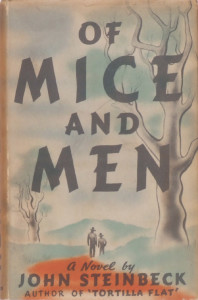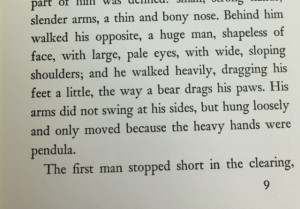Many factors go into making a book rare and/or valuable. The book’s age, how many copies still exist, who owned it, and so on. One very common criterion is whether or not the book is a “First Edition”, the first printing of the book. Well, it is possible to narrow this down even more. You can have a “first printing” of a book, and a “first state” of the book.
 A first printing is pretty obvious. It is the first printing of the book. But a particularly popular book may have many printings. A first state printing, means that at some time during this first printing, a change was made somewhere in the book–an error corrected, something omitted added, and so on.
A first printing is pretty obvious. It is the first printing of the book. But a particularly popular book may have many printings. A first state printing, means that at some time during this first printing, a change was made somewhere in the book–an error corrected, something omitted added, and so on.
Such was the case with John Steinbeck’s Of Mice and Men. During the first printing of this controversial classic, a line describing Lennie was changed in the first chapter. It originally read “His arms did not swing at his sides, but hung loosely and only moved because the heavy hands were pendula.” Whether it was the obscure word or questionable spelling, it was decided to  remove the last nine words and reset the page. There is also a problem with a page number later that was fixed. However 2, 500 uncorrected pages had already run through and were subsequently bound and sold; the first state of the first printing.
remove the last nine words and reset the page. There is also a problem with a page number later that was fixed. However 2, 500 uncorrected pages had already run through and were subsequently bound and sold; the first state of the first printing.
When rare book dealers talk about Of Mice and Men, they are quick to note whether their copy contains the “pendula” line and the dot between the two eights on page 88. It adds considerably to the value and scarcity of the book. The copy in the Galvin Rare Book Room is a first state printing in excellent condition, part of the Mark Lutz Collection. Lennie would be so proud.
